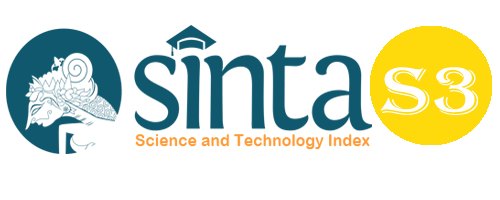Human Capital Management as a Resource in Achieving Competitive Advantage
Abstract
The aim is to provide the conceptual framework for the administration of human capital (MHC) and to show how human capital may be employed to secure the competitive advantage of an organization. Human capital is a concept referring to the extra value provided to organizations by humans. It stresses the necessity for strategic human capital investments through commitment, retention, talent management, and learning and development programs. These studies often mostly depend on an examination of the literature available for their data. Study results stress the relevance of human capital and the strategic measures that contribute to success and competitiveness.
Keywords
Full Text:
PDFReferences
Afiouni, F. (2013). Human Capital Management: A New Name for HRM?. International Journal of Learning and Intellectual Capital, 10(1), 18-34.
Agung, A. L. (2013). Human Capital Competencies. Elex Media Komputindo.
Barney, J. B. (2000). Firm Resources and Sustained Competitive Advantage. in Economics Meets Sociology in Strategic Management. Emerald Group Publishing Limited.
Baron, A., & Armstrong, M. (2007). Human Capital Management: Achieving Added Value Through People. Kogan Page Publishers.
Barro, R. J. (2001). Human Capital and Growth. American Economic Review, 91(2), 12-17.
Benevene, P., & Cortini, M. (2010). Interaction Between Structural Capital And Human Capital In Italian Npos: Leadership, Organizational Culture, And Human Resource Management. Journal Of Intellectual Capital, 11(2), 123-139.
Boon, C., Eckardt, R., Lepak, D. P., & Boselie, P. (2018). Integrating Strategic Human Capital And Strategic Human Resource Management. The International Journal of Human Resource Management, 29(1), 34-67.
Brymer, R. A., Molloy, J. C., & Gilbert, B. A. (2014). Human Capital Pipelines: Competitive Implications of Repeated Interorganizational Hiring. Journal of Management, 40(2), 483-508.
Coleman, J. S. (1988). Social Capital in The Creation of Human Capital. American Journal of Sociology, 94, S95-S120.
Duschek, S. (2004). Inter-Firm Resources And Sustained Competitive Advantage. Management Revue, 53-73.
Grossman, M. (2000). The Human Capital Model. In Handbook of Health Economics (Vol. 1, pp. 347-408). Elsevier.
Indrawati, A. D. (2013). Pengaruh kepuasan kerja terhadap kinerja karyawan dan kepuasan pelanggan pada rumah sakit swasta di kota denpasar. Matrik: Jurnal Manajemen, Strategi Bisnis dan Kewirausahaan.
Ingham, J. (2007). Strategic Human Capital Management. Routledge.
Khotimah, K. (2017). Pandangan Berbasis Sumber Daya (RBV) Dalam Pembahasan Organisasi Ekonomi. Future: Jurnal Manajemen dan Akuntansi, 5(1), 31-41.
Lazear, E. P. (2009). Firm-Specific Human Capital: A Skill-Weights Approach. Journal Of Political Economy, 117(5), 914-940.
Lin, C., Yu-Ping Wang, C., Wang, C. Y., & Jaw, B. S. (2017). The Role of Human Capital Management in Organizational Competitiveness. Social Behavior and Personality: An International Journal, 45(1), 81-92.
Martín‐de‐Castro, G., Navas‐López, J. E., López‐Sáez, P., & Alama‐Salazar, E. (2006). Organizational Capital as Competitive Advantage of The Firm. Journal of Intellectual Capital.
Mayo, A. (2001). The Human Value of The Enterprise. London: Nicholas Brealey Publishing.
Moloeng, L. J. (2007). Metodologi Penelitian Kualitatif Edisi Revisi. Bandung: Remaja Rosdakarya.
Ningsih, S. (2018). The Relationship Between Motivation and Worker’s Productivity in Civil Registration and Population Department, Asahan Regency, Indonesia. Budapest International Research and Critics Institute-Journal (BIRCI-Journal). P. 148-160.
Nulhaqim, S. A., & Sulastri, S. (2019). Analisis Faktor Eksternal Dan Faktor Internal Organisasi Pelayanan Sosial Relawan Muda Riau. JISPO Jurnal Ilmu Sosial dan Ilmu Politik, 9(1), 155-170.
Ongkorahardjo, M. D. P. A., Susanto, A., & Rachmawati, D. (2008). Analisis Pengaruh Human Capital Terhadap Kinerja Perusahaan (Studi Empiris pada Kantor Akuntan Publik di Indonesia). Jurnal Akuntansi dan Keuangan, 10(1), 11-21.
Poluakan, M. V., Dikayuana, D., Wibowo, H., & Raharjo, S. T. (2019). Potret Generasi Milenial pada Era Revolusi Industri 4.0. Focus: Jurnal Pekerjaan Sosial, 2(2), 187-197.
Rengkung, L. R. (2015). Keuntungan Kompetitif Organisasi dalam Perpsektif Resources Based View (RBV). AGRI-SOSIOEKONOMI, 11(2A), 1-12.
Riniwati, H. (2016). Manajemen Sumberdaya Manusia: Aktivitas Utama dan Pengembangan SDM. Universitas Brawijaya Press.
Ruhana, I. (2012). Pengembangan Kualitas Sumber Daya Manusia Vs Daya Saing Global. PROFIT: Jurnal Administrasi Bisnis, 6(1).
Schultz, T. W. (1961). Investment in Human Capital. The American Economic Review, 51(1), 1-17.
Sidiq, R. S. S., & Jalil, A. (2021). Virtual World Solidarity: How Social Solidarity is Built on the Crowdfunding Platform Kitabisa.com. Webology, 18(1).
Sinambela, L. P. (2021). Manajemen Sumber Daya Manusia: Membangun Tim Kerja Yang Solid Untuk Meningkatkan Kinerja. Bumi Aksara.
Sudaryo, Y., Aribowo, A., & Sofiati, N. A. (2018). Manajemen Sumber Daya Manusia: Kompensasi Tidak Langsung dan Lingkungan Kerja Fisik. Andi.
Tucunan, R. J. A., Supartha, W. G., & Riana, I. G. (2014). Pengaruh Kepemimpinan Transformasional terhadap Motivasi dan kinerja Karyawan. E-jurnal ekonomi dan Bisnis Universitas Udayana, 3(09), 533-550.
DOI: https://doi.org/10.33258/birci.v4i2.2023
Article Metrics
Abstract view : 427 timesPDF - 219 times
Refbacks
- There are currently no refbacks.

This work is licensed under a Creative Commons Attribution-ShareAlike 4.0 International License.

This work is licensed under a Creative Commons Attribution-ShareAlike 4.0 International License.

_.gif)

















_.gif)



